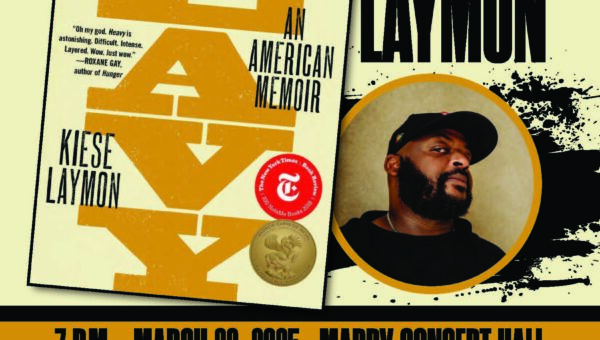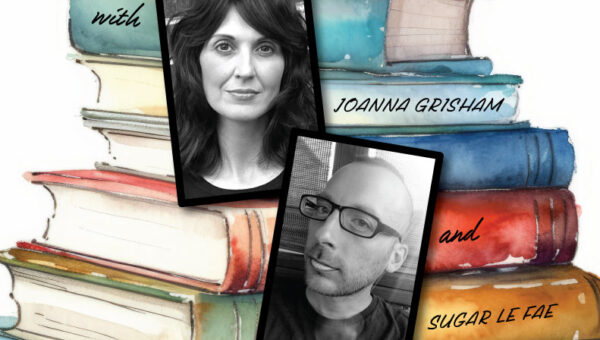On a solitary wander through the Asian Galleries of Chicago’s Art Institute, I am drawn into the recesses of a long hallway and towards a small selection of Japanese prints. I’m not looking for them, I want to see the jade axes again and marvel at their gorgeous uselessness. They are shaped like pendants but look like doorways and if I stare long enough I believe I can walk through them. Instead I find myself going in circles, then spiraling into a room I have never noticed before.
As always in public, half my mind is on the people around me and how they see me. I look like a woman alone, without even an artist’s pad for company. I am not an elegant executive on their lunch break. I am not leading a school group or socializing with a friend. I come winded from the subway with my sweatshirt in a lop-sided cinch. I want to disappear in the crowd but the crowd itself has a hundred eyes and I project onto them my own dense judgements. But in this dim lit cul-de-sac I start to relax, to forget myself, to focus. When I find the prints, I am utterly alone.
What I see is called ukiyo-e, the “floating world” of gardens and refined interiors imagined by Japanese men in the 17-18 centuries. After the exhibit I will buy my own books of these images. I will pet the small birds and trace delicate, flowering trees. Yet the ornaments that first catch my eye are minor, mere window dressing to the bijin, the beauties. They walk the landscapes I admire, strolling over bridges in pairs and gazing out at streams or mountains. They all possess the same ageless beauty, cheeks drawn with one sweet curve, but their clothes are a riot of colors and folds; though floating they seem as heavy as a tapestry.
I walk down the hallway encountering each beauty in turn as if she has been placed for me alone, for my delight. I have missed that many of the women pictured are sex-workers who lived enslaved. I don’t see the children they will bear or who they will become in old age. Even middle age (which I am fast approaching) does not exist in this fantasy of pleasure. Youth and feminine beauty are equated and encompassing. The beauties bare their tiny teeth in laughter.
The exhibit is small, just a handful of prints, but I find myself pacing out the room again and again. It takes time for me to understand my attraction to these dolled faces when now I prefer a smooth androgyny. They look a little like my first love, an actress with the same brightness, the same flair. But I want them, I realize, because I want what they have. Desire is a desire for what we lack, Socrates says in Plato’s Symposium. After years of hating my body without being able to change it I no longer try to be what I am not, but I itch to close the distance even for a moment: to delight in another since I cannot delight in myself.
Looking at my reflection in the glass that separates us, I remember a line from John Berger’s 1972 documentary, Ways of Seeing: “Men look at women; women watch themselves being looked at.” But not all of us have been made to be looked at. The women men see are young women, thin women, white women, women who dress like women, women who think of themselves as women. (Isn’t that what a woman is? Someone who satisfies these qualities?) If one of the rest of us is caught by a glance, they are tossed away. Everywhere they are being seen and discarded. Yet to the person themselves this absence is a presence, like a second skin. Invisibility like nakedness to their own eyes.
I look again at the beauties in that secret hallway of the museum and in the glass I see myself, I watch myself being looked at. Berger’s documentary comes to mind in this moment because I have just seen it with other academics, mostly women, some young and others old; I am on my way back from a conference called Feminism and Classics in Seattle.
The room in which I watched the documentary was a classroom, square and utilitarian as public universities often are, with adults sitting awkwardly in tight rows in front of a projection screen. I was there because of my fondness for Ways of Seeing, which I had seen many times before, and while I followed Berger’s voice most of the time I watched the others watching him. A part of me wanted to see their expressions, but I was just as happy to study their clothes and makeup instead. One had candy red lips and a vintage dress, the first of either I’d seen in a professional setting. Jeans outnumbered suits at least three to one and I wondered if I had missed an opportunity to escape, even temporarily, the strictures of a typical conference. Stuck in my own narrow row I massaged a shoulder beneath its strap and pushed the straining belly fat back into its cage.
I watched the others watch the screen while I kept one eye out for someone else, a person I had glanced in the hall between sessions, a brief sidelong view. A small person with spectacles and close-cut gray hair. Drab leggings, an enormous flannel shirt, neon tennis shoes. I wanted to see this absurd costume again and understand its fascination for me. But the person was nowhere to be seen.
Instead, as the documentary came to a close, I was drawn into the conversation of the classroom. After much back and forth between the younger people, their war stories of conferences past overlapping and building into a chorus of reported compliments and insults, what their advisors had said they must or must not wear, a timid voice spoke up: “When I look in the mirror, I see an old woman. Out in the world no one sees me, I’m ignored.” I had heard this before, that old women are uniquely invisible in crowds, in stores. They aren’t derided, they simply do not exist. But this was the first time I had heard the words spoken aloud and as soon as they were spoken no one else knew what to say. The woman herself fell silent. She seemed not only sad but ashamed.
I cannot remember who this woman was or what she looked like. It is possible we met again in the years that followed. It is possible, likely even, that she is a full professor somewhere or a dean. In my reconstruction of this moment she holds none of that power. Instead she holds her hands tightly and looks down, away. She is wearing a gold pin on a blue suit, very pretty. What she says is not extraordinary but the fact that she is willing to speak stays with me. Her words follow me around the conference and onto the airplane. They are here now in the Art Institute, my silent guide.
We look together at the ukiyo-e exhibit, my memories and I. I have been studying the prints as a voyeur, an outsider whose race and age and self-perception seem at odds with the beauties behind the glass. But on second look I realize not only (only) sex-workers are pictured here: some of the women are poets and the words of these poets frame the floating world. I find translations below the prints and try to connect text with image. Most of all I look for the poets themselves, hunting them with a hunger I didn’t feel before, a desire that runs beneath the skin.
I find, at last, Ono no Komachi in a portrait by Suzuki Harunobu. The poet stands alone, her slim form obscured by folds and folds of fabric. She turns not to a companion, not to cherry blossoms above, but away from us, aside. She is lost in the thought of her craft.
I study the delicate features for the woman herself and as I look I feel at first frustration and then anger and finally nothing at all. We have so few women writers from the past and who knows what any of them looked like? But surely they looked like themselves, unique. Komachi, who lived 800 years before Harunobu drew her, has been made as generically lovely as the women whose lives her poems now illustrate. Without the label I wouldn’t know her from Eve.
After the exhibit I will read all I can about this woman and all we have of her verses. She describes her body’s dissolution in the force of love but does not tell us whether she considered herself beautiful. The 14th century Nō playwrights who fleshed out her spare biography claim that she was lovely, but also flighty and cruel to her admirers, later driven into destitution and mad old age. This fall is etched on her face. “Once long ago I was like a lotus-blossom,” says Komachi’s character in one of these plays, translated by Roy Teele, “nowadays most like the pigweed. This face is haggard and emaciated; skin wrinkled like an old frozen pear.”
As soon as Komachi becomes old and ugly, the playwrights exile her from society. She becomes literally unseen, like the woman whose words at the conference are haunting me. Looking now at Harunobo’s Komachi, her idealized form, I see how the genius of this poet has been made acceptable to my gaze. Her authority and youthful beauty have been conflated so that I cannot see—cannot imagine—one without the other.
When I look at a mirror or a photograph of myself I want to see nothing. I avoid my image everywhere, cover it up, turn my head violently away. But what if I got my wish? What if I were as invisible as I desire? Would I, like old Komachi, be thrown out into the wilderness? The woman who spoke at the conference looked prestigious, honored, yet old age did not increase her sense of her own authority. I have assumed that I will care less about my looks as time goes by and, at the same time, become more valued for my mind. Could the opposite be true? Will people dismiss me as an old woman just as I am stepping into power?
I am humbled to realize that my war with my body may only worsen as time goes on. I have a kind of privilege at 35 that I won’t have later, no matter how much I pity myself now. This visibility, this value I have in society is a precious thing, a kind of capital. I want to know how to spend it.
Studying Komachi in her beautiful silks my mind turns again to the person I was looking for at the conference, the one I saw only once, the memory of whom led me through the halls on a golden thread. I imagine us speaking, I imagine myself asking the questions I can hardly articulate even now: Why do you dress that way? Don’t you worry what others will think? Am I the only one who sees you? Is that enough?
***
In the second episode of Ways of Seeing, the one I have just seen at the conference in Seattle, Berger interviews five white women about their experience of seeing and being seen. It might appear that he has plucked these women off the street, but they were all artists, writers, and activists in his wider circle, and at least two knew him well. Anya Bostock began a relationship with Berger in 1951 and had two children with him, while Eva Figes corresponded with Berger over the course of her career.
The women range in age from what appears to be their 20s to early 40s, with one exception: the artist and communist writer Barabara Niven, white haired and largely silent. Conversation flits among the younger women, eventually alighting on the topic of narcissism: Is it good? Bad? Different for men and women? Eight minutes in, Niven decides “to twist ‘round” this topic “a little bit,” to discuss the “sort of self-delight of a person, whether it’s a man or a woman,” because self-delight is “a thing that matters tremendously.” Then she launches into a monologue as cryptic as it is unexpected:
[Self-delight is] not only a kind of inner thing, by which you live, but is a very outer thing
by which you gain relationships with your own context in the world that you can’t gain
any other way … It’s when you have somehow been made so unconscious of yourself
that you easily, naturally, sort of compulsively go out to whatever is going on around
you.
Now, when you’re a child that tends, more than with people, to be other things, doesn’t
it? Mountains, streams, wherever you go, and then only gradually as you go on, you
make this kind of absolutely necessary contact with people. But I do think that the sort of
essence of self-delight as a kind of possible thing in the modern world and something
that fewer women have than men, and want, and must have is the power, the compulsion—
not the power, the compulsion—to make contact with the world as you are living in it.
Berger nods and says a soft “yes” as if he knows what this means, and then Figes rebuts, saying that self-delight has completely eluded her because she only ever sees herself as an image that will be compared to other images. And when you do happen to catch yourself, say, in a shop-window, “it’s a tremendous shock, because you suddenly see yourself as you are, which is windblown, untidy, badly dressed, tired, and so on.”
The first ten times I watched this episode, I paid attention to the younger women, nodding along to their experiences of effacement and self-disgust. When I catch myself in shop windows it is a terrible shock and at the same time a confirmation of my fears. Niven’s comments baffled me, and I felt free to ignore her, to pass over her with that summative “yes.” Then I learned that she was an artist, a writer, and I began to finally hear her words and study them. I was struck also by how beautiful she is in the film and how alive she seems, though in fact she died just a few months after the series aired. I have to admit that both her beauty and her proximity to death made me try harder to understand her.
The more I watch this episode of Ways of Seeing the more I see Niven’s companions making the same mistake I did, allowing their gaze to slide past her again and again. What they have to say and what I have to say to myself about self-image—being ugly and fat and unseen and undesired—this is all in the realm of the known, the knowable. What Niven offers instead is an account of the self that transcends image. Figes and the others are fixated on how to see themselves differently or how to be seen as they wish. Niven focuses on “the compulsion to make contact with the world as you are living in it.” Seeing the self and being seen have no place in her notion of self-delight. Self-delight is incredibly important, it “matter tremendously,” but it isn’t about the self as the others have been describing it. It comes when one has become “unconscious” of the self. It’s about doing and acting, exploring the mountains and walking the wide streams; treating others as if they were the landscape of your imagination rather than a board of judgement.
How can this indifference be achieved? It comes perhaps from being ignored in old age and then rediscovering an embodiment that isn’t dependent on being seen. There is a rupture here, maybe even a trauma, that frees you from caring. Komachi is not allowed to disappear like this, not to the viewer. She is always seen and evaluated, just as I evaluated Barbara Niven’s body before deciding to listen to her.
And yet despite being rendered invisible by the world, Niven decided to voice her self-delight anyway. She speaks sincerely, trying to communicate, but she doesn’t let the immaturity of those around her determine what she tries to tell them. She isn’t limited by my seeing or not seeing her, by whether Berger and the others heed her. She is her own authority.
Niven in mind, I turn back to the ukiyo-e prints at the museum, looking for Komachi the pigweed, the old frozen pear. She is here but only for someone looking closely, on a picture within the picture in Utagawa’s Toyokuni’s “The Courtesan Takikawa of Ogiya.” A beauty is seated, long tobacco pipe in hand, looking at a scroll with old Komachi on a log-shaped stupa. In the verses above her Komachi admonishes a priest who has told her to show more respect towards the sacred object:
If the stupa were within Paradise,
It would indeed be wicked to sit on it,
But if it is outside,
Can it be such a terrible thing?
Komachi’s shoulders curl over a staff supporting her, mimicking bent grasses in the back- and foreground. Long white hair and deep lines frame her face, but she still looks strong, one bare foot flung out in energized repose.
The woman looking at Komachi is her mirror image. The flowers of her robe are like Komachi’s but more luxuriant, the foot that peeks out from under it like the ghost of Komachi’s long, strong leg. This print begins by contrasting young and old, the rich adornments of the sex-worker and her interior space with Komachi’s impoverished rustication. But the verses tell a different story: of a woman who is where she wants to be, not where someone else has placed her. Someone who is defining her own reality. Looking again at the two women, the younger one appears fixed, bounded by her robes and the tobacco pipe at her feet. The stupa on which Komachi sits evokes an entire, limitless world.
We who look for the self-delight of old age, we are not Komachi or Niven yet. But many of us are not the beauty looking at them either. We are not beautiful, or if we are we don’t believe that we are, we have not been made to feel that we are. We are in the space that floats between.
I stand in the museum before this image of two women, looking from one to the other, looking for an answer. I never did find you at the conference, and here in Chicago so many miles away I hope wildly for a moment that you will enter. Like me you have turned from the jade axes and found this quiet hall. Under the soft lights and standing next to me I realize that your costume isn’t absurd, it’s inspired. I turn away from Komachi and will you forward to meet me. I want you to girdle my waist and shuck your bright shoes. I want to push the flannel folds aside and leave this frame forever.





